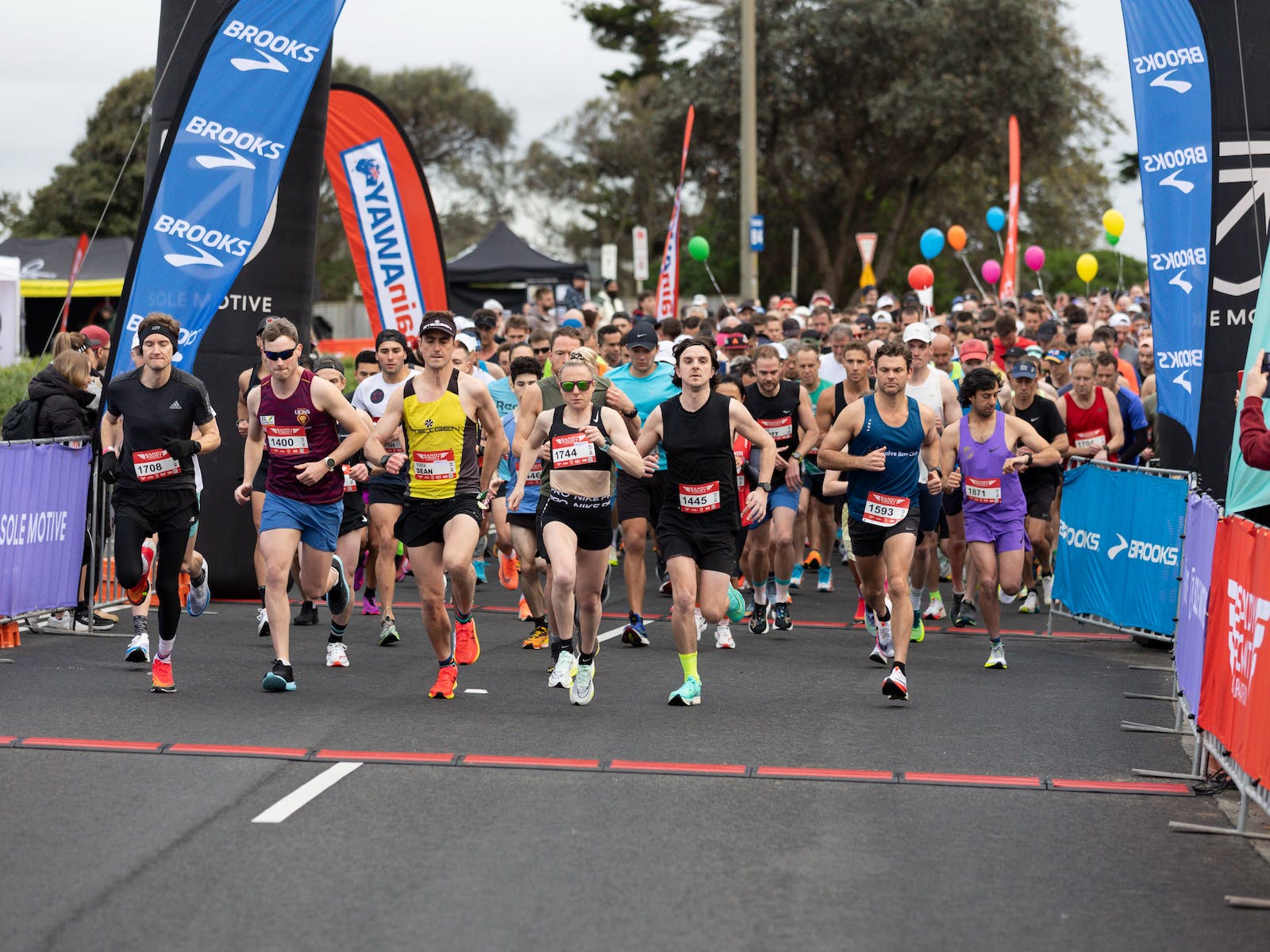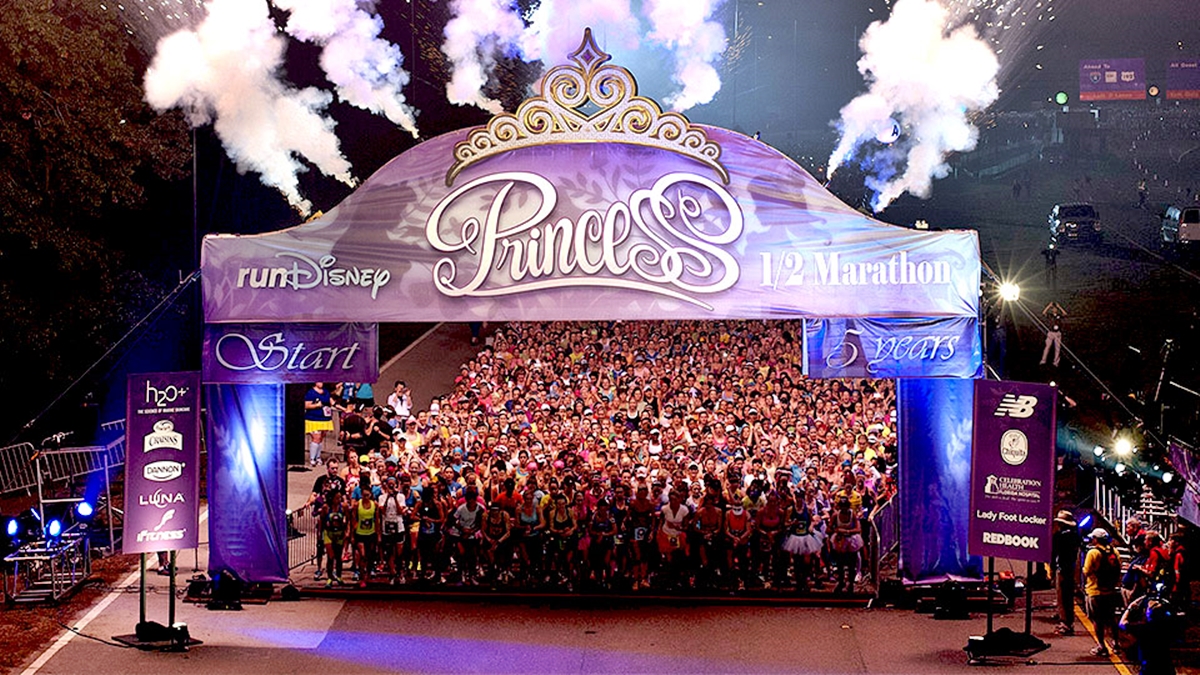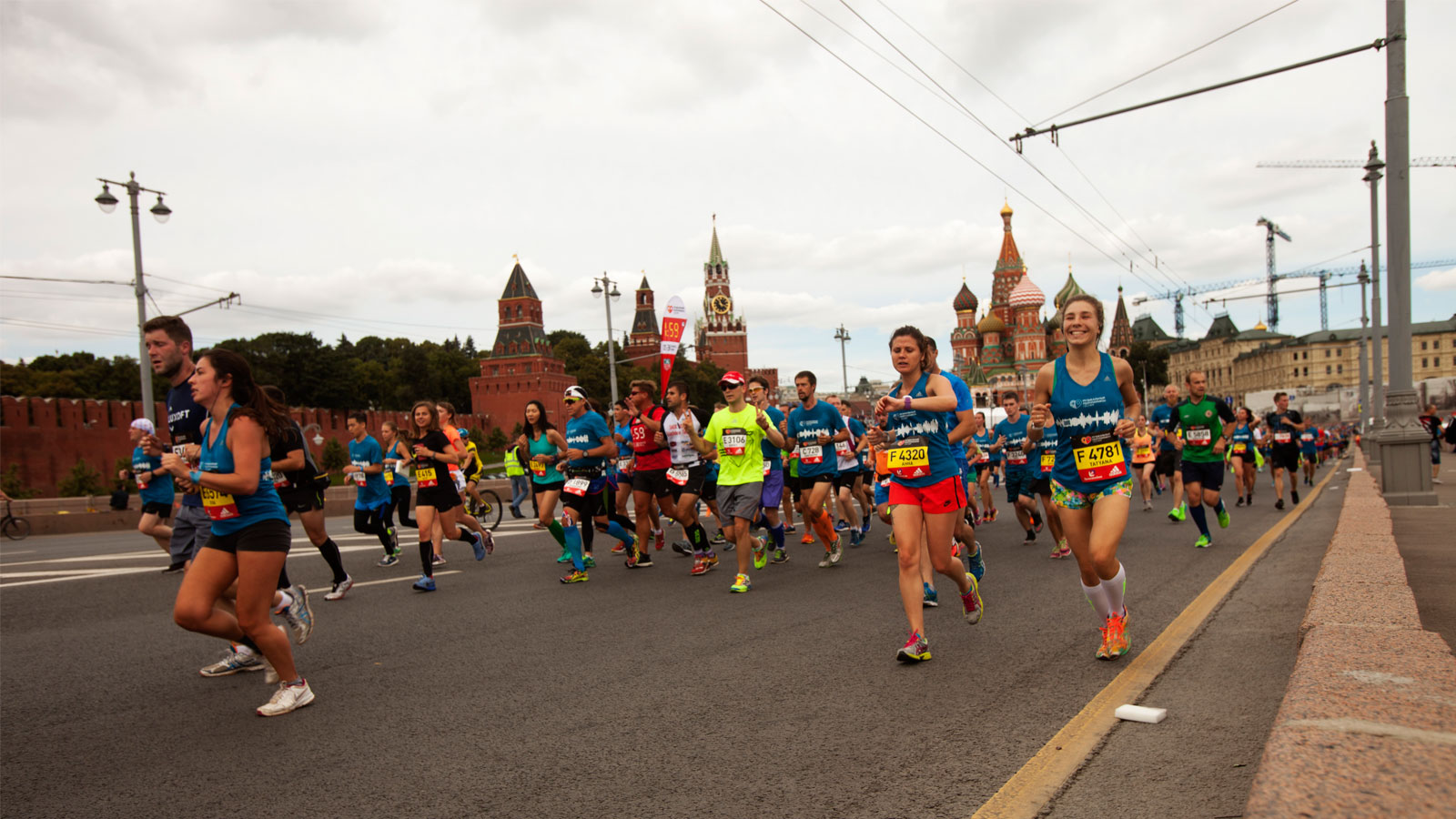

Featured
What Time Does The Half Marathon Start
Modified: August 19, 2023
Find out what time the featured half marathon starts and plan your race day accordingly. Join us for an exciting event filled with running enthusiasts and memorable moments.
Introduction
Welcome to the exciting world of half marathons! Whether you’re a seasoned runner or just starting out, participating in a half marathon can be a challenging and rewarding experience. One of the key factors to consider when preparing for a half marathon is knowing the start time of the event. This crucial information sets the stage for your training, arrival time, and overall race strategy.
The start time of a half marathon can vary depending on various factors, such as the location, event organizer, and weather conditions. Therefore, it is essential to familiarize yourself with the official start time to ensure that you don’t miss the starting gun.
Arriving at the race venue on time is crucial for a successful race. By knowing the start time, you can plan your travel and warm-up routine accordingly. Additionally, being aware of the start time allows you to adjust your pre-race rituals, such as fueling and hydration, to ensure optimal performance.
Arriving early at the half marathon provides an opportunity to familiarize yourself with the racecourse, settle any pre-race nerves, and find an ideal spot amidst the sea of fellow runners. It also allows you to engage in pre-race stretches and warm-ups, which are essential for preventing injuries during the race.
Additionally, knowing the half marathon’s start time can have a significant impact on your overall race strategy. It enables you to pace yourself properly and ensure that you reach key milestones, such as hydration stations and cheering crowds, at the appropriate times. This strategic approach can help you maintain a steady rhythm and maximize your performance throughout the race.
In the following sections, we will delve deeper into the factors that can influence the start time of a half marathon and provide valuable tips on how to prepare and arrive on time for this exciting event.
Overview of the Half Marathon event
The half marathon is a long-distance running event that covers a distance of 13.1 miles or 21.1 kilometers. It is a popular race distance that attracts both experienced runners seeking to challenge themselves and beginners looking to take on a new fitness goal. The half marathon is often considered a stepping stone towards a full marathon for many runners.
Half marathons are typically organized as standalone events or as part of a larger race weekend or running festival. They are held in various locations, ranging from bustling city streets to scenic countryside routes, offering runners a diverse and exciting race experience.
The half marathon event gathers a diverse group of participants, including professional and amateur runners, as well as individuals of all ages and fitness levels. It’s a community of running enthusiasts coming together to celebrate the sport and push their limits.
Participants in a half marathon are required to cover the entire distance within a specified time limit, usually ranging from 2 to 3 hours. The course is marked with directional signs or markers, and water and fuel stations are strategically placed along the route to provide runners with the necessary hydration and energy to complete the race.
Half marathons usually attract large crowds of spectators who cheer on the runners, adding to the energetic atmosphere of the event. Supportive crowds and fellow runners create a vibrant and encouraging atmosphere, motivating participants to push through any physical or mental challenges they may encounter during the race.
Finishing a half marathon is a significant accomplishment for many runners, symbolizing their determination, endurance, and commitment to personal fitness goals. Participants often receive finisher medals and commemorative t-shirts as a testament to their achievement.
Overall, the half marathon event provides an opportunity for individuals to challenge themselves, embrace a healthy lifestyle, and experience the thrill of crossing the finish line. It’s a celebration of personal achievements, camaraderie, and the joy of running.
Importance of knowing the start time
Knowing the start time of a half marathon is crucial for several reasons. It sets the foundation for your race day preparations, helps you plan your schedule, and ensures that you arrive at the race venue on time. Let’s explore the importance of knowing the start time in more detail:
1. Training and Preparation: The start time of the half marathon impacts your training schedule. By knowing when the race begins, you can structure your training program to peak at the right time. This allows you to gradually increase your mileage, incorporate speed workouts, and plan your tapering period leading up to the race. Being aware of the start time helps you align your training efforts with the actual race day demands, boosting your performance and readiness.
2. Arrival and Organization: Arriving at the race venue on time is essential for a smooth race day experience. Knowing the start time allows you to plan your travel arrangements accordingly, considering factors such as traffic, parking availability, and public transportation schedules. It also gives you ample time to pick up your race bib, attach your timing chip, and familiarize yourself with the event logistics. Being organized and punctual sets a positive tone for the rest of the day.
3. Warm-Up and Mental Preparation: The start time determines when you should begin your warm-up routine. Warming up properly is crucial for preparing your muscles, increasing blood flow, and mentally getting into the right zone before the race. By knowing the start time, you can plan your warm-up activities such as dynamic stretching, light jogging, and mobility exercises, ensuring that you are physically and mentally primed for the half marathon.
4. Race Strategy: Understanding the start time allows you to develop an effective race strategy. You can gauge how fast to start, when to conserve energy, and when to make strategic moves throughout the race. By timing your pace and knowing the course layout, you can plan when to push harder on the uphill sections and when to increase your speed on the downhill stretches. Having a well-thought-out race strategy can help you maintain a steady and efficient pace, leading to a better overall performance.
5. Safety and Logistics: Being aware of the start time helps you navigate the race logistics smoothly. It ensures that you have enough time to use the restroom, check your equipment, and finalize any last-minute preparations. Moreover, it allows you to join the corrals or designated starting areas in a timely manner, reducing overcrowding and potential accidents. Prioritizing safety and adequate preparation contributes to a positive race experience for yourself and your fellow runners.
By knowing the start time of the half marathon, you can optimize your training, arrive prepared, strategize effectively, and ensure a smooth race day experience. It’s an essential piece of information that sets the stage for a successful and enjoyable race!
Factors affecting the start time
The start time of a half marathon can be influenced by various factors, both logistical and environmental. Event organizers take these factors into account when determining the most suitable start time for the race. Let’s explore some of the key factors that can affect the start time of a half marathon:
1. Weather Conditions: Weather plays a significant role in determining the start time of a half marathon. Extreme weather conditions such as excessive heat, strong winds, or thunderstorms can pose risks to the safety and well-being of runners. Event organizers may adjust the start time to minimize exposure to adverse weather and ensure a safer race environment.
2. Course Capacity: The capacity of the race course can impact the start time of a half marathon. If the course is narrow and cannot accommodate all the participants simultaneously, the race may be divided into waves or staggered start times. This allows for a smoother and more efficient flow of runners on the course, reducing congestion and improving overall race experience.
3. Event Schedule: Half marathons are often part of larger race weekends or running festivals. In such cases, the start time of the half marathon may be influenced by the overall event schedule. Organizers aim to ensure that different race distances, such as 5Ks or marathons, don’t overlap in order to minimize any logistical conflicts and maximize the participation in each individual race.
4. Local Regulations: Local regulations and permits can affect the start time of a half marathon. Depending on the city or region where the race takes place, there may be restrictions on noise levels or road closures during specific hours. Event organizers work closely with local authorities to comply with these regulations, which may influence the timing of the race start.
5. Accessibility and Transportation: Another factor that impacts the start time is the accessibility and availability of transportation options to the race venue. Organizers consider the convenience of participants, particularly those traveling from out of town, by scheduling the start time to align with public transportation schedules and minimize congestion on the roads.
6. Participant Experience: The overall participant experience is a crucial consideration for event organizers. They aim to create an engaging and enjoyable race atmosphere, encouraging participants to fully immerse themselves in the event. By selecting an optimal start time, organizers can take into account factors like optimal lighting conditions, spectator participation, and the potential for post-race festivities.
It’s important to note that these factors may vary from one race to another. It’s advisable to refer to the specific information provided by the race organizers to accurately determine the start time of the half marathon you plan to participate in.
Official start time of the Half Marathon
The official start time of a half marathon is determined by the event organizers and is typically communicated to participants well in advance. The start time varies from race to race and can be influenced by various factors, as discussed earlier. It’s important for participants to be familiar with the official start time to ensure a smooth and successful race day. Here are some key points regarding the official start time of a half marathon:
1. Communication: Event organizers typically provide the official start time through various channels, including the race website, participant emails, and race information packets. It’s important for participants to check these sources regularly to stay updated and ensure they have the most accurate information regarding the start time.
2. Time Zones: If you are traveling to participate in a half marathon, it’s essential to consider any time zone differences. Make sure to adjust your travel plans and race day preparations accordingly to ensure you arrive at the race venue on time, accounting for any time zone changes.
3. Warm-up and Arrival Time: The start time provided by the organizers is the time when the race officially begins. It’s important to factor in additional time for warm-up routines, gear check-in, hydrating, using the restroom, and navigating the race venue. Arriving early ensures that you have sufficient time to complete these tasks and mentally prepare yourself for the race.
4. Corrals and Starting Areas: Many races utilize different corrals or starting areas to manage the flow of participants at the start line. The official start time may be specific to each corral or starting area, with staggered starts occurring at regular intervals. Make sure to know your assigned corral or starting area and familiarize yourself with the corresponding start time to ensure a smooth start to your race.
5. Pre-Race Instructions: The race organizers often provide specific pre-race instructions regarding timing chips, bib placement, and any additional logistics related to the start time. Familiarize yourself with these instructions to ensure you are fully prepared and comply with any requirements or guidelines set by the organizers.
6. Changes or Updates: It’s important to note that there can be last-minute changes or updates to the official start time of a half marathon. This can be due to safety concerns, weather conditions, or any unforeseen circumstances. Stay connected with the race organizers through their official channels to receive any updates or changes and adjust your plans accordingly.
In summary, knowing the official start time of the half marathon is crucial for participants to plan their race day effectively. By being aware of the start time and considering associated factors such as warm-up routines, arrival time, and corrals, participants can ensure a smooth and successful race experience.
Preparing for the Half Marathon Start
Preparing for the start of a half marathon involves several key aspects that contribute to a smooth and successful race experience. By adequately planning and executing your pre-race routine, you can set yourself up for a strong start and a positive race outcome. Here are some important considerations to keep in mind when preparing for the half marathon start:
1. Arrival Time: Arriving at the race venue early is crucial to allow time for various pre-race activities. Plan to arrive at least an hour before the official start time to give yourself ample time to park, pick up your race packet, and familiarize yourself with the race venue layout. Arriving early also helps alleviate stress and allows for a more relaxed start to your race day.
2. Warm-Up Routine: Engaging in a proper warm-up routine before the race start is essential for priming your muscles and preparing your body for the exertion ahead. Include dynamic stretches, light jogging, and strides to gradually increase your heart rate and loosen up your muscles. This warm-up helps improve flexibility, blood flow, and overall performance during the race.
3. Hydration and Nutrition: Pay attention to your hydration and nutrition leading up to the half marathon start. Stay well-hydrated in the days leading up to the race and ensure you consume a balanced meal that includes carbohydrates for energy. It’s advisable to have a light snack or energy gel 30-60 minutes before the start to provide an additional energy boost for the early miles of the race.
4. Bathroom Breaks: Take advantage of available restroom facilities before the race start. This ensures that you are comfortably prepared for the race without any distractions or discomfort along the way. Keep in mind that lines for restrooms can be long, so factor this into your arrival time.
5. Gear Check-In: If the race offers gear check-in services, take advantage of it to securely store any extra clothing or personal belongings. This allows you to start the race with only the essential items you need, reducing any extra weight or distractions during the run.
6. Mental Preparation: Utilize the time before the half marathon start to mentally prepare yourself. Visualize your race strategy, set realistic goals, and focus on positive affirmations. Take deep breaths, calm your mind, and mentally reinforce your training and preparation. Maintaining a positive mindset can significantly impact your race day performance.
By preparing for the half marathon start with these key considerations in mind, you can optimize your race day experience. Arriving early, warming up properly, staying hydrated and fueled, managing bathroom breaks, organizing your gear, and mentally preparing yourself will contribute to a successful start and set the stage for a strong and enjoyable race.
Tips for Arriving on Time
Arriving on time for the half marathon is crucial to ensure a stress-free race day experience and avoid any last-minute rushes. Consider the following tips to help you arrive at the race venue on time:
1. Plan your travel: Research the best route to the race venue and determine the mode of transportation you will be using. Consider the expected traffic conditions and any road closures that may be in place. Leave early enough to allow for unexpected delays and ensure you arrive with plenty of time to spare.
2. Set multiple alarms: To avoid oversleeping on race morning, set multiple alarms at different intervals. Place your alarm clock or phone across the room to force yourself to physically get out of bed. Ensure that your alarms are loud enough to wake you up, even if you’re in a deep sleep.
3. Prepare your gear the night before: Lay out your race outfit, shoes, and any accessories you’ll be wearing the night before the race. Check that you have your race bib, timing chip, and any other essentials packed in your bag. This will save you time and stress in the morning, allowing you to quickly get dressed and grab your gear before heading out.
4. Have a pre-race breakfast plan: Decide on your pre-race breakfast and prepare it the night before. Opt for easily digestible foods such as oatmeal, a bagel with nut butter, or a banana. Preparing your breakfast in advance will save you time and ensure you have the necessary fuel to start your race strong.
5. Allow extra time for parking and bag check: If you’re driving to the race venue, be mindful of the parking situation. Some races offer designated parking areas, while others may require you to find street parking. Factor in additional time to secure parking and make your way to the race start. If the race offers a bag check service, plan to arrive early to check in your bag and avoid any last-minute rush.
6. Familiarize yourself with the race logistics: Read through the race website or participant guide to familiarize yourself with the race logistics, including the location of the start line, the layout of the race venue, and any specific instructions provided by the organizers. Knowing where to go and what to expect will help you navigate the race morning with ease.
7. Take care of bathroom needs: Make a final bathroom visit before leaving for the race venue. This will minimize the chances of needing to use the restroom during the race and help you stay focused on your performance. Be aware of the restroom facilities available at the race venue so that you can plan accordingly.
8. Stay updated with weather conditions: Check the weather forecast for race day and dress appropriately. If there’s a chance of rain or adverse weather conditions, make sure to carry any necessary gear such as a rain jacket or extra layers. Being prepared for the weather will ensure your comfort and enable you to adapt your race strategy accordingly.
By following these tips, you can set yourself up for a smooth and timely arrival at the half marathon race venue. Arriving on time allows you to focus on your race preparation, warm-up routine, and mental readiness, setting the tone for a successful and enjoyable race day experience.
Conclusion
Knowing the start time of a half marathon is crucial for a successful and enjoyable race experience. It sets the foundation for your training, arrival time, and overall race strategy. By understanding the factors that can affect the start time, you can better plan and adapt your race day preparations.
Arriving at the race venue on time allows you to familiarize yourself with the course, engage in proper warm-up routines, and settle any pre-race nerves. It also gives you the opportunity to strategize and ensure a steady pace throughout the race. Additionally, being aware of the official start time helps you coordinate your travel plans, manage hydration and nutrition, and organize your gear effectively.
To arrive on time, it’s important to plan your travel, set multiple alarms for race morning, and prepare your gear and breakfast in advance. Familiarize yourself with the race logistics, factor in additional time for parking and bag check, and take care of any bathroom needs before the race start. Staying updated with weather conditions and dressing appropriately for race day will contribute to a comfortable and enjoyable race experience.
It’s important to note that the information provided in this article is a general guideline. Each half marathon may have specific details and requirements, so it’s essential to refer to the race organizers’ official communication for the most accurate and up-to-date information regarding the start time.
By being prepared and arriving on time for your half marathon, you can set yourself up for a memorable and satisfying race experience. So lace up your running shoes, set your alarm, and get ready to conquer the half marathon start line with confidence!









